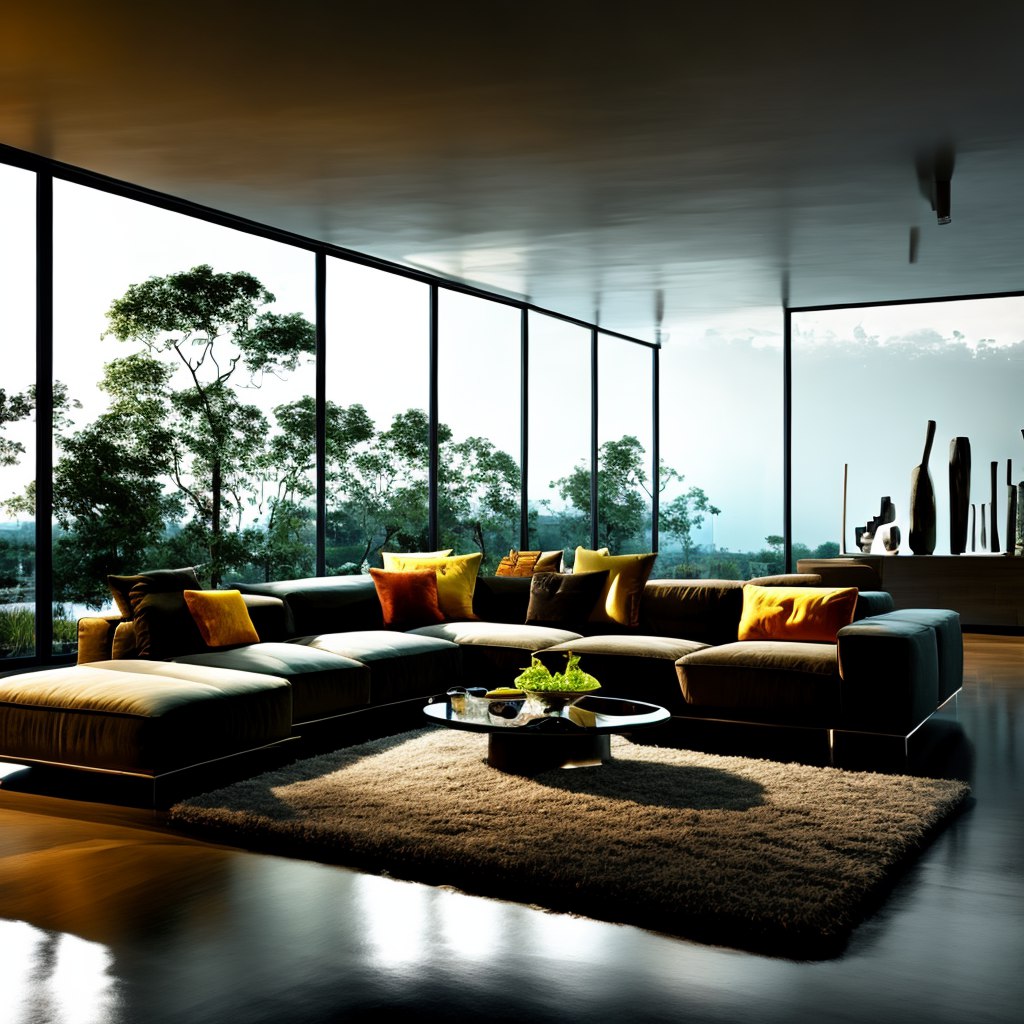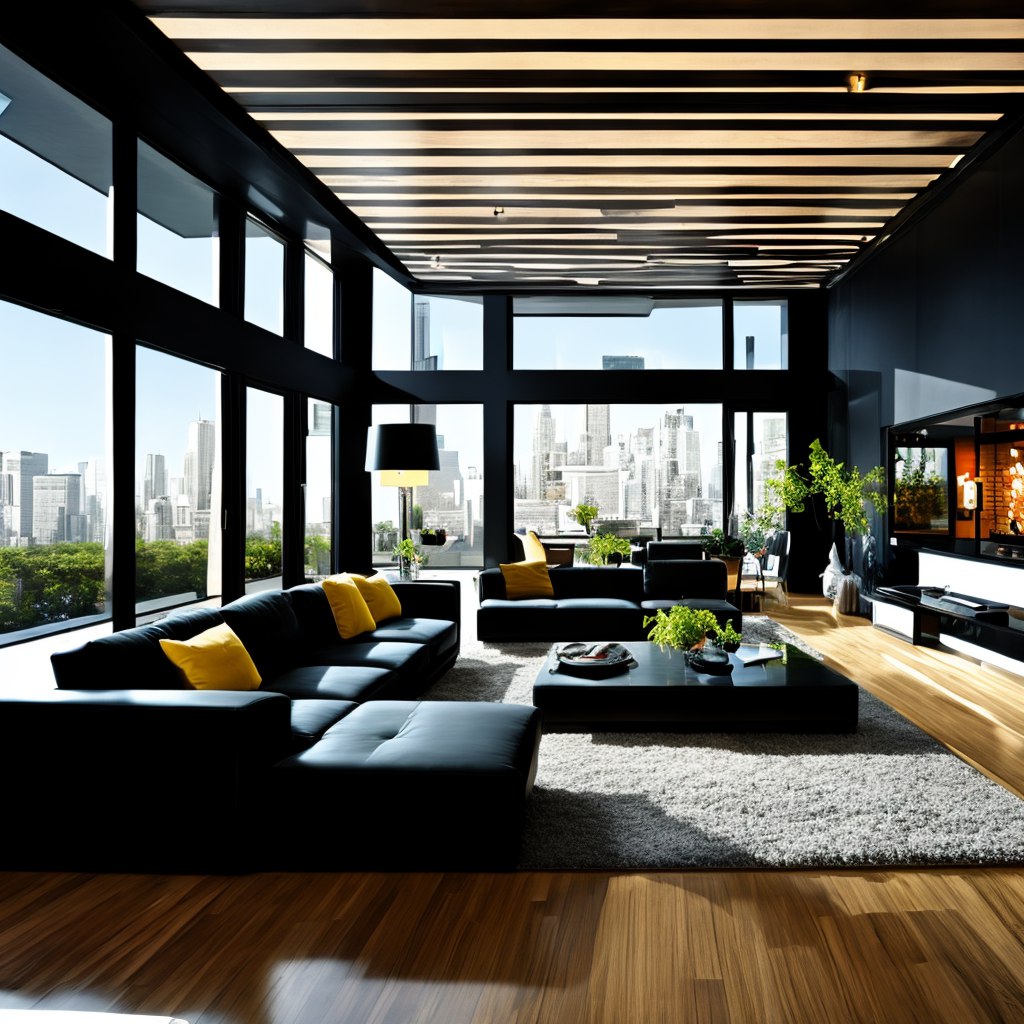▎The Art of Modern Living: Stunning Living Room Designs
▎Introduction
The living room is often considered the heart of a home, serving as a gathering space for family and friends. In the realm of modern design, this space has evolved dramatically, reflecting contemporary aesthetics while meeting the functional needs of diverse families. This article explores “The Art of Modern Living: Stunning Living Room Designs,” offering in-depth insights tailored for architects and large families. Through a comprehensive examination of design principles, styles, and practical considerations, we aim to inspire and inform your approach to creating remarkable living spaces.

▎Understanding Modern Living Room Design
▎1. Defining Modern Design
Modern design is characterized by its emphasis on simplicity, functionality, and a connection to the environment. It often features clean lines, open spaces, and a neutral color palette that allows for versatility and personalization. Understanding these foundational elements is crucial for architects and families aiming to create stunning living rooms that resonate with their lifestyles.
▎2. Key Principles of Modern Living Room Design
– Functionality: Every design choice should serve a purpose. This includes selecting furniture, decor, and layout that enhance usability.
– Simplicity: A minimalist approach reduces clutter and promotes tranquility. By focusing on essential elements, designers can create a serene atmosphere.
– Natural Light: Maximizing natural light through large windows or open layouts enhances the feeling of spaciousness and improves well-being.
– Balance: Achieving visual harmony through symmetry or asymmetry can create interest without overwhelming the senses.
▎Inspiring Modern Living Room Ideas
▎1. Open Concept Living Spaces
▎Benefits of Open Concepts
Open concept living rooms have become increasingly popular in modern home design. By removing walls that separate the living room from adjacent spaces like the kitchen or dining area, architects can create a seamless flow that enhances interaction among family members. This layout is particularly beneficial for large families, as it fosters connectivity while allowing for multiple activities to occur simultaneously.
▎Design Considerations
– Zoning: Use rugs or furniture arrangements to define different areas within the open space without compromising flow.
– Consistent Color Schemes: Maintain a cohesive color palette across adjoining areas to create visual harmony.
– Multi-functional Furniture: Opt for furniture that serves multiple purposes, such as ottomans that double as storage or coffee tables with built-in shelving.
▎2. Statement Furniture Pieces
▎The Power of Focal Points
In modern living rooms, statement furniture pieces can serve as focal points that draw the eye and anchor the space. A bold sofa or an artistic coffee table can set the tone for the entire room, making it both functional and visually appealing.
▎Selection Tips
– Scale: Choose pieces that are proportionate to the size of the room. Oversized furniture in a small space can feel cramped, while tiny pieces in a large room may get lost.
– Material and Texture: Experiment with different materials—such as wood, metal, and fabric—to add depth and interest.
▎3. Incorporating Technology
▎Smart Living Rooms
Technology integration is a hallmark of modern living rooms. From smart TVs to automated lighting systems, technology can enhance both convenience and ambiance.
▎Considerations for Integration
– Hidden Wiring: Plan for cable management to maintain a clean look and avoid clutter.
– Smart Controls: Use centralized systems to control lighting, temperature, and entertainment options seamlessly.
▎4. Layered Lighting
▎Importance of Lighting
Lighting plays a crucial role in setting the mood of a living room. A combination of ambient, task, and accent lighting can create a dynamic atmosphere that caters to various activities, from family gatherings to quiet evenings.
▎Types of Lighting
– Ambient Lighting: Overhead fixtures or recessed lighting provide general illumination.
– Task Lighting: Floor lamps or table lamps offer focused light for reading or activities.
– Accent Lighting: Use wall sconces or LED strips to highlight artwork or architectural features.
▎5. Textures and Materials
▎Creating Visual Interest
Incorporating various textures can make a modern living room feel warm and inviting. Mixing materials like wood, metal, glass, and textiles adds depth to the design.
▎Suggestions for Textures
– Soft Furnishings: Include plush rugs, cushions, and throws to soften hard surfaces and create comfort.
– Natural Elements: Wood accents or stone features can bring an organic touch to the space.
▎Color Schemes for Modern Living Rooms
▎1. Neutral Palettes
Neutral colors form the backbone of modern design. Shades of white, gray, beige, and taupe create a serene environment that allows for flexibility in decor.
▎2. Bold Accents
While neutrals dominate, incorporating bold accent colors can add personality. Consider using vibrant hues through accessories like cushions, artwork, or decorative objects.
▎3. Monochromatic Schemes
A monochromatic color scheme utilizes varying shades of a single color to create depth while maintaining cohesion. This approach can be particularly striking in modern design.
▎Sustainable Design Practices
▎1. Eco-Friendly Materials
As sustainability becomes increasingly important, using eco-friendly materials in modern living rooms is essential. Look for furnishings made from reclaimed wood, recycled metals, or organic textiles that minimize environmental impact.
▎2. Energy Efficiency
Incorporating energy-efficient appliances and lighting can significantly reduce the environmental impact of your living space while also lowering utility bills.
▎Personalizing Your Space
▎1. Family-Centric Design
For large families, creating a living room that accommodates various activities is vital. Consider incorporating built-in storage solutions for toys or books to keep the space organized while ensuring easy access.
▎2. Reflecting Personal Style
Encourage family members to contribute their tastes to the design process. Incorporate personal artifacts or artwork that resonate with your family’s history and experiences.
▎Layout Considerations for Large Families
▎1. Space Planning
Effective space planning is crucial when designing living rooms for larger families. Consider traffic flow and how different areas will be used throughout the day.
▎2. Flexible Seating Arrangements
Incorporating flexible seating arrangements allows families to adapt their living spaces based on their needs. Modular sofas or movable chairs can accommodate gatherings of various sizes.
▎3. Activity Zones
Designate specific areas within the living room for different activities—such as reading nooks, play areas for children, or spaces for board games—to cater to diverse interests.
▎Integrating Nature into Modern Living Rooms
▎1. Biophilic Design Principles
Biophilic design emphasizes the connection between humans and nature. Incorporating natural elements into modern living rooms can enhance well-being and create a calming atmosphere.
▎Ideas for Integration
– Indoor Plants: Use potted plants or vertical gardens to bring greenery indoors.
– Natural Light: Maximize natural light through large windows or skylights.
– Natural Materials: Incorporate wood, stone, or other organic materials in furniture and decor.
▎2. Outdoor Living Integration
If space permits, consider creating an outdoor living area that seamlessly connects with the indoor space. Sliding glass doors can blur the lines between inside and outside, enhancing the overall living experience.
▎The Role of Art in Modern Living Rooms
▎1. Statement Artwork
Art can serve as a powerful focal point in modern living rooms. Large canvases or sculptures can add personality and provoke conversation among family members and guests.
▎2. Gallery Walls
Creating a gallery wall allows families to showcase their unique tastes and memories through framed photographs and artwork. This personalized touch adds warmth and character to the space.
▎Conclusion
The art of modern living encompasses a thoughtful blend of aesthetics, functionality, and personal expression. By understanding key design principles and embracing innovative ideas, architects and families can create stunning living rooms that serve as inviting spaces for connection and relaxation.
As you embark on your journey to design a modern living room that reflects your family’s identity while catering to practical needs, consider these insights as guiding principles. From open concept layouts to sustainable practices and personalized touches, each element contributes to crafting an extraordinary living environment.
By prioritizing both beauty and functionality in your design choices, you can elevate your living space into a true sanctuary—a place where memories are made, stories are shared, and life unfolds beautifully.
—
This comprehensive exploration of modern living room designs aims to inspire architects and families alike in their quest to create stunning spaces that resonate with their unique lifestyles and values. Embrace these principles as you embark on your design journey; the art of modern living awaits you!
